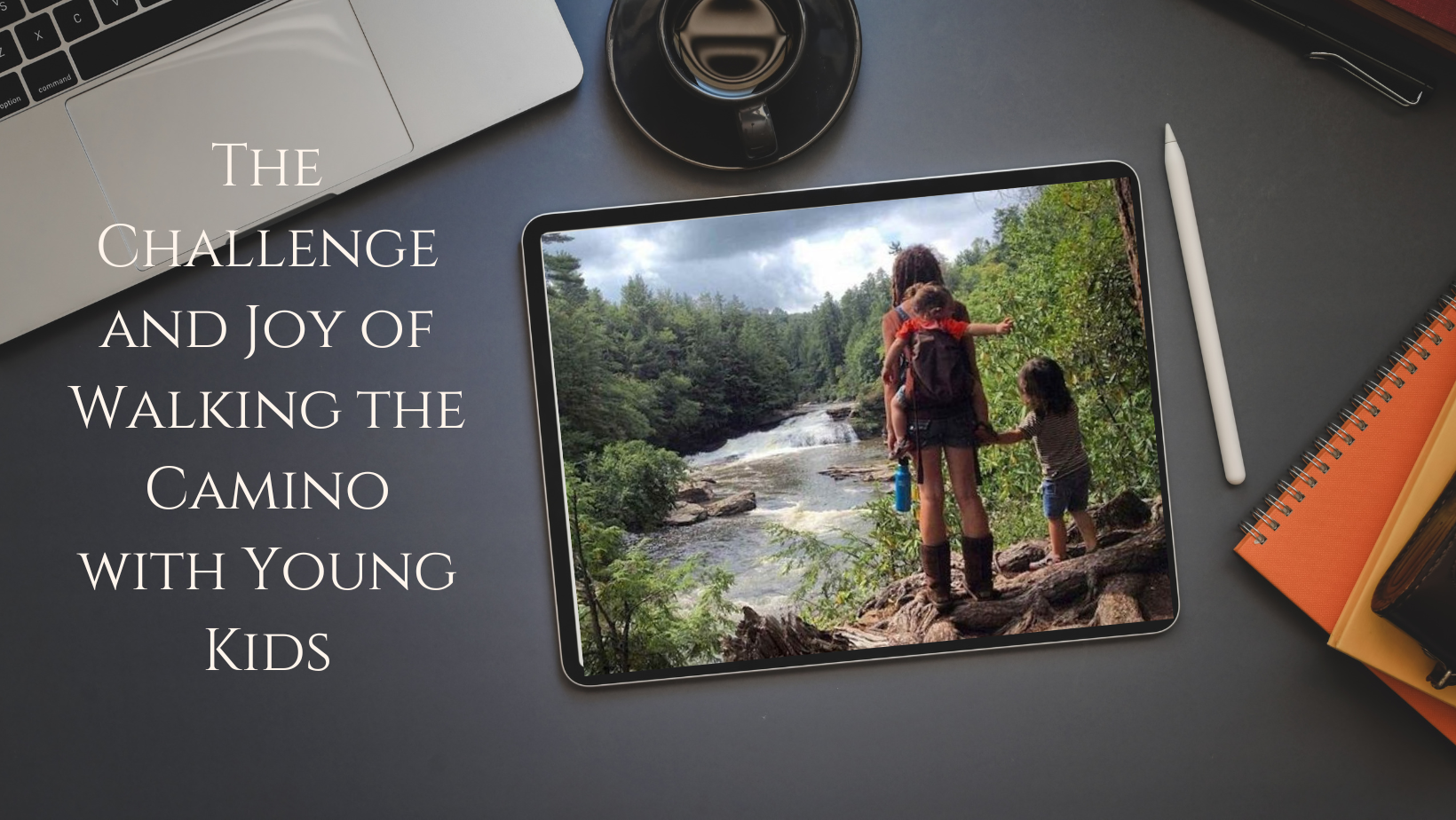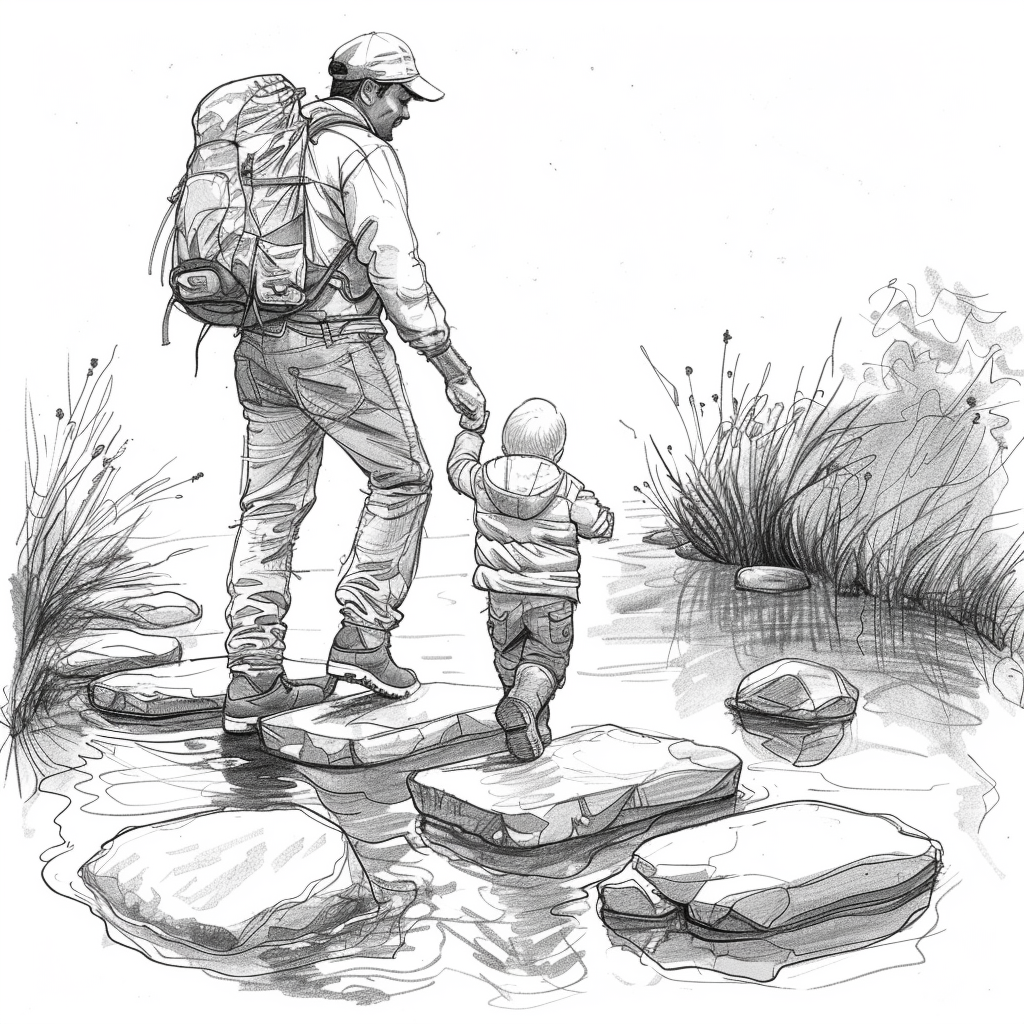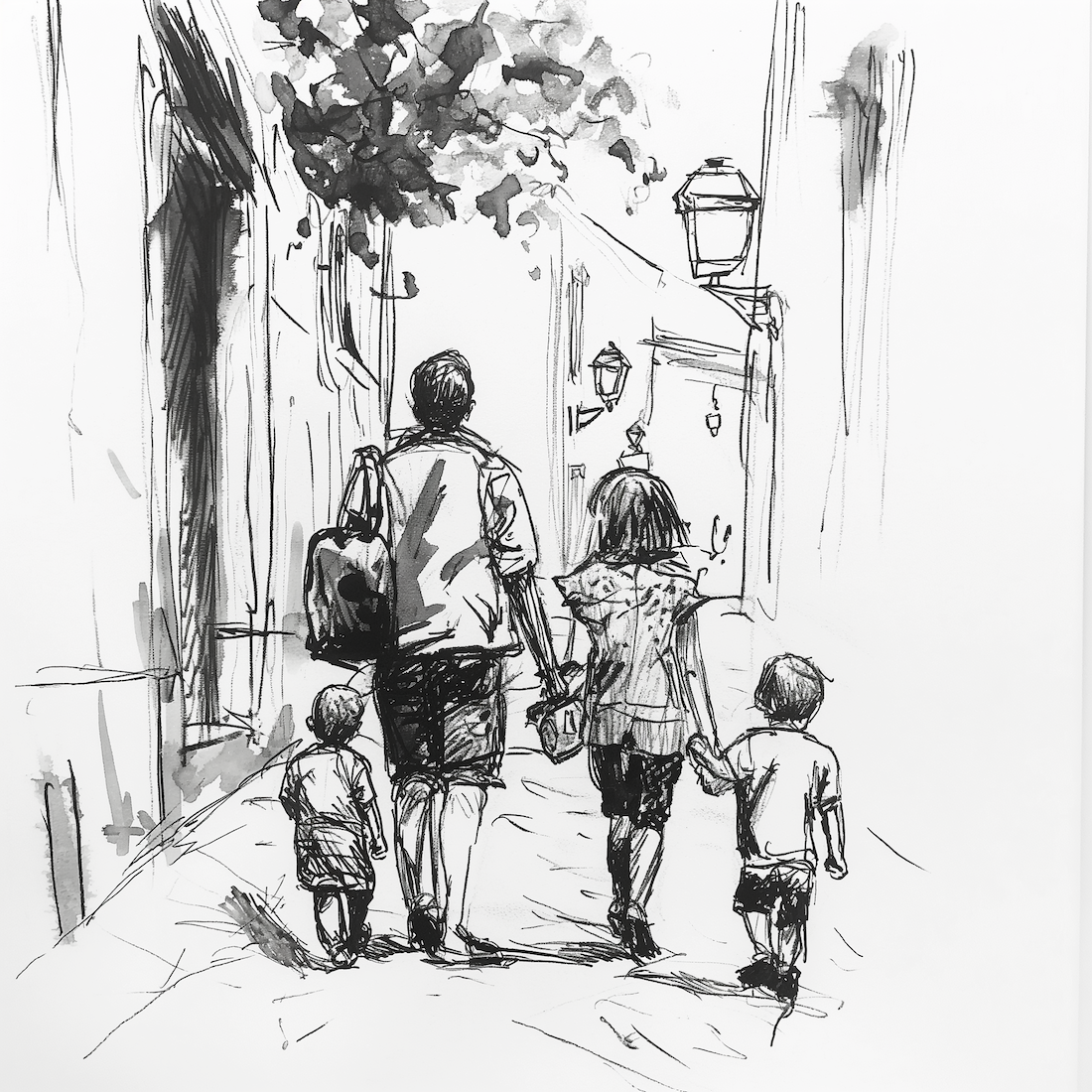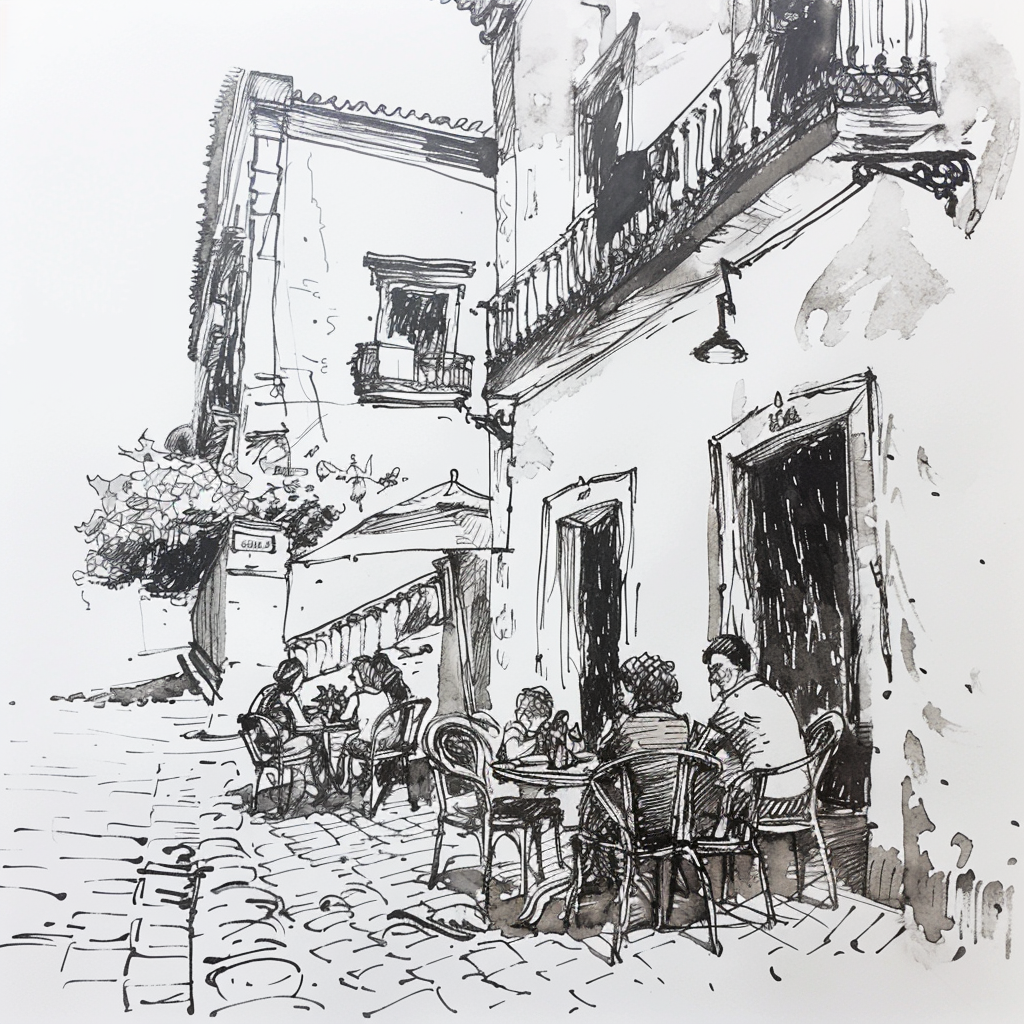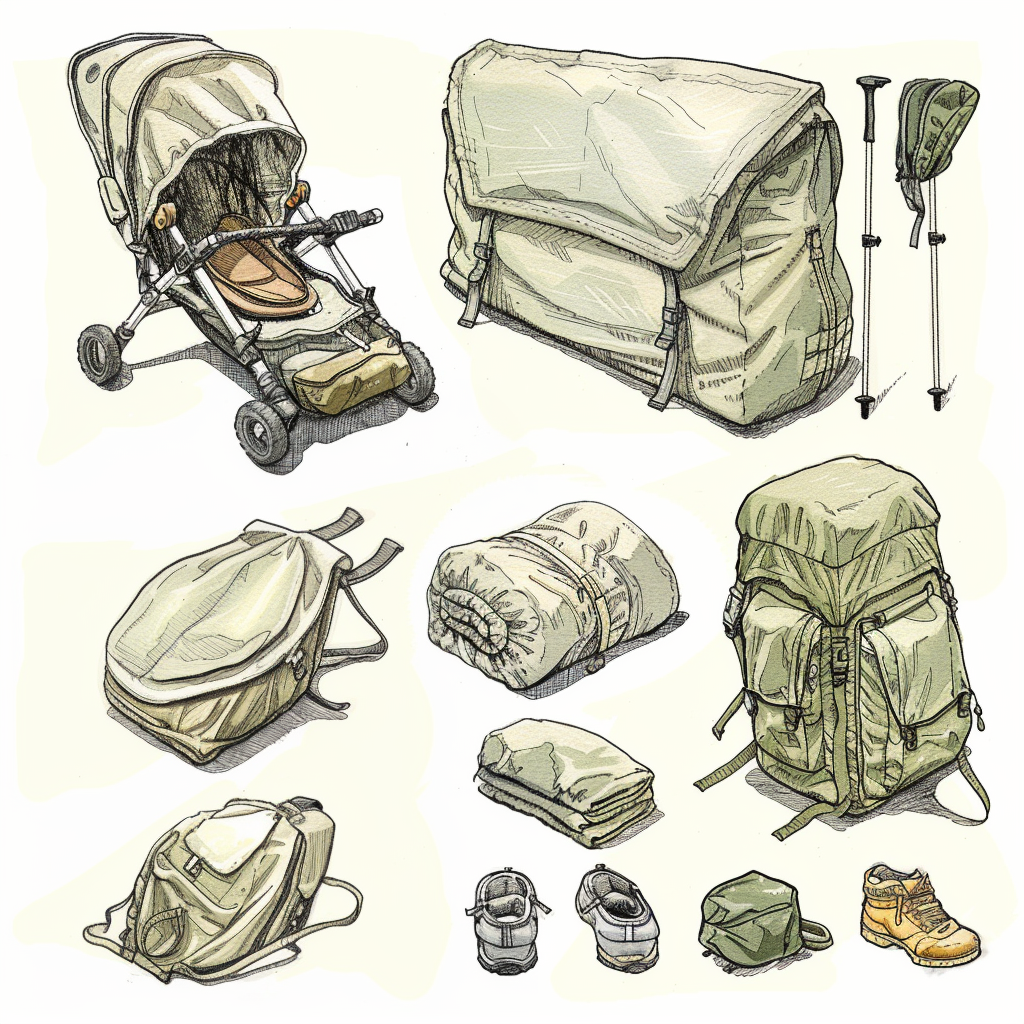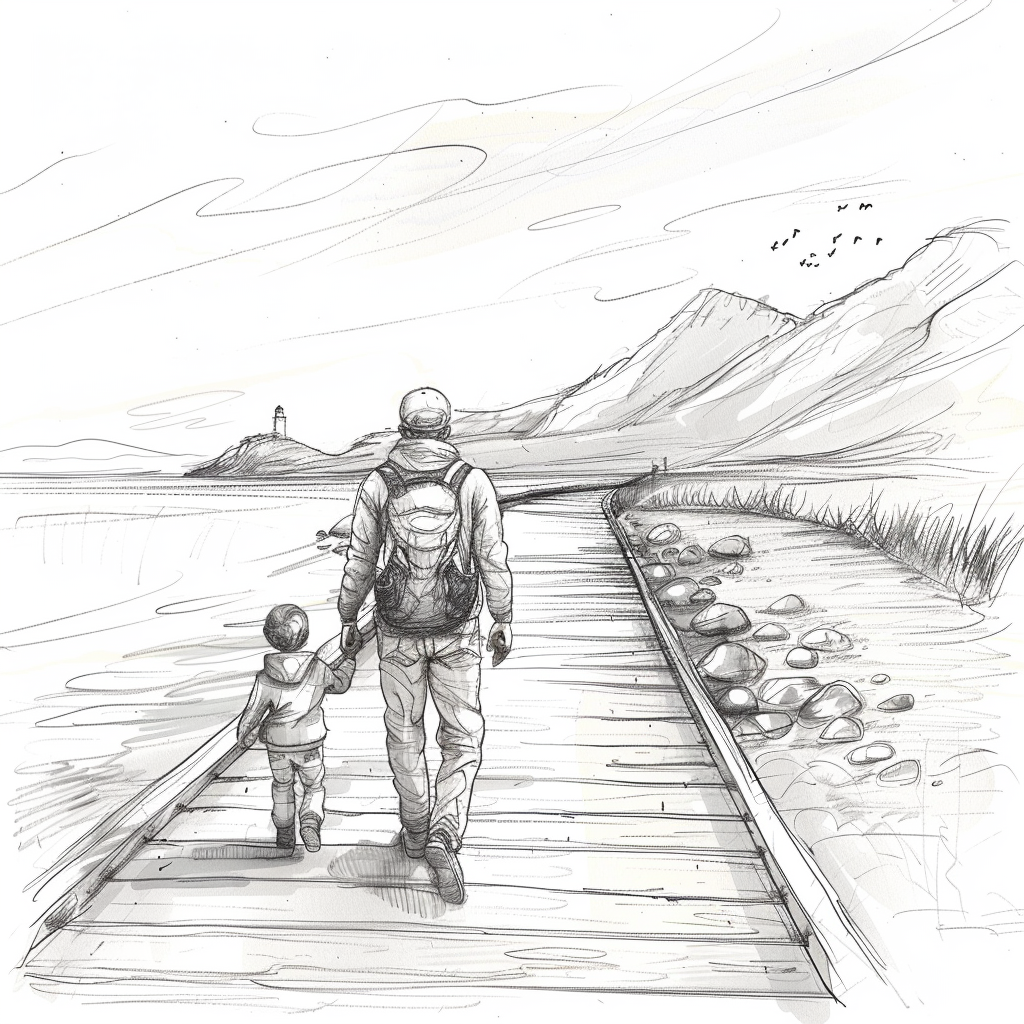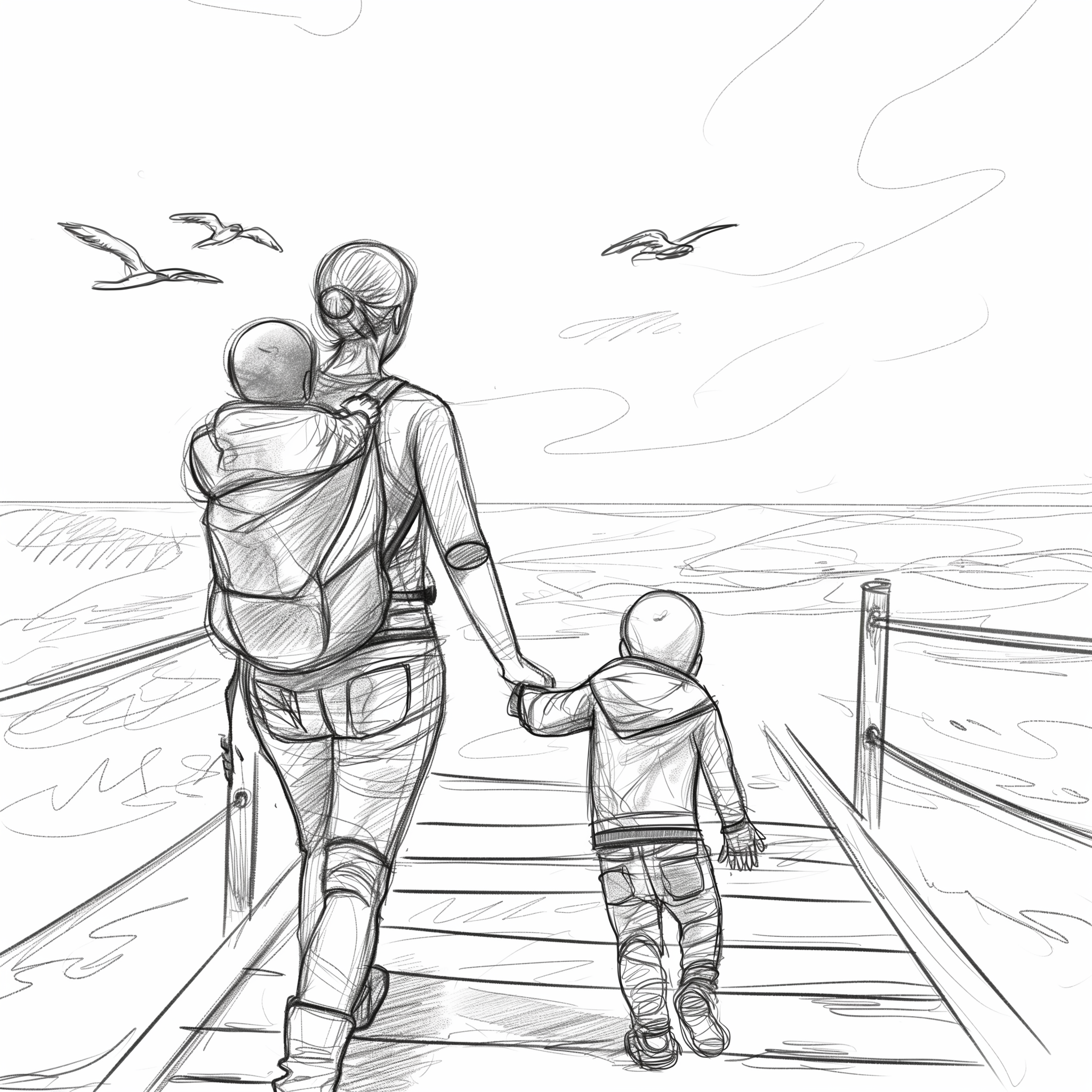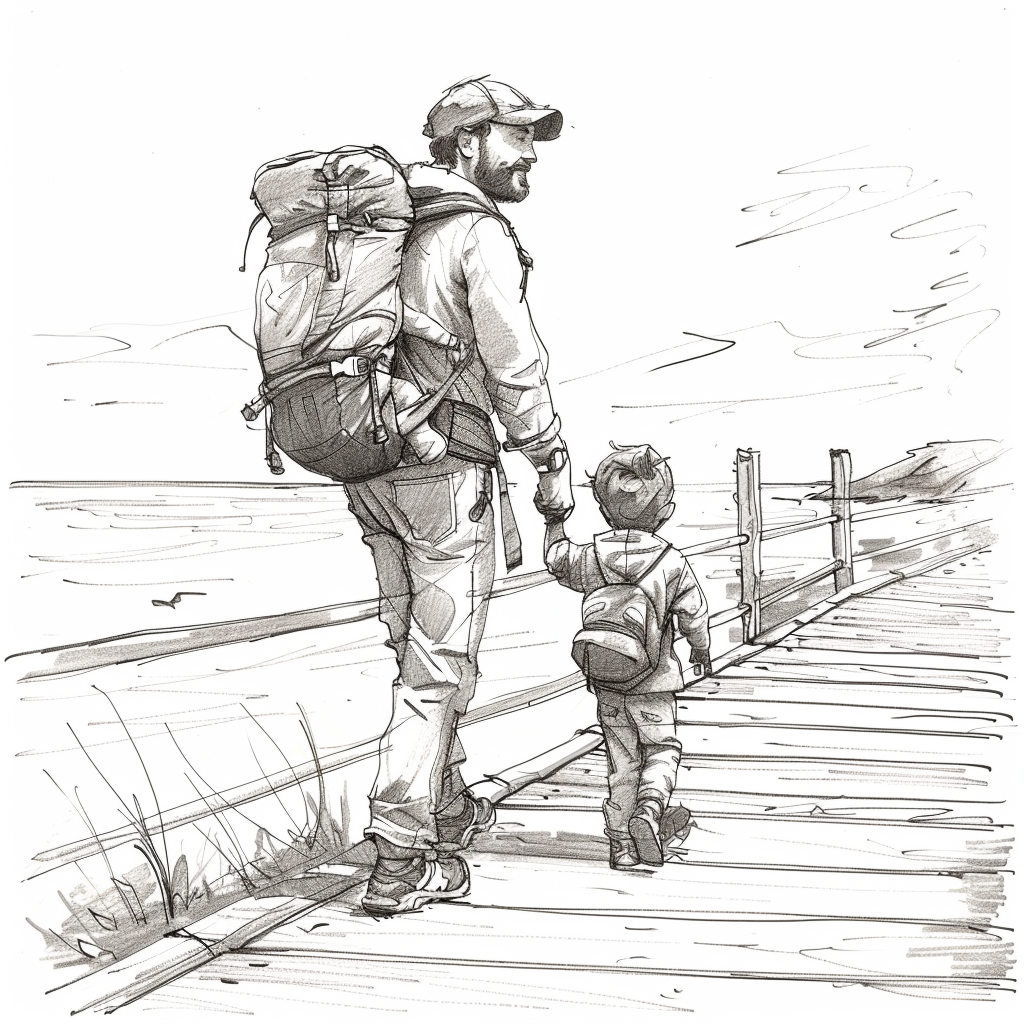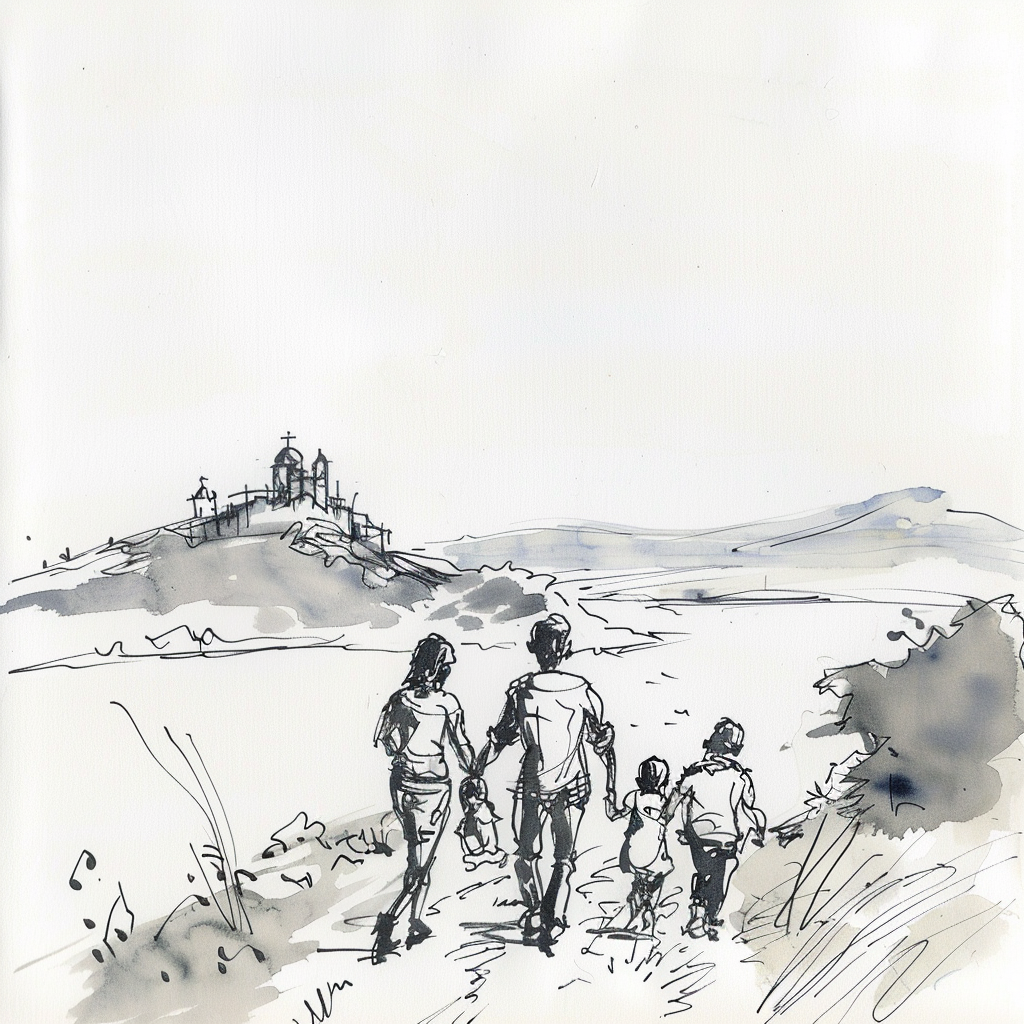Young parents on the Camino Portuguese
The Camino is a transformative journey, rich in history, culture, and personal reflection. But what if you could share this incredible experience with your children? Walking the Camino with kids offers a unique opportunity to bond as a family, introduce young ones to the joys of pilgrimage, and create lasting memories together as you experience the Challenge and Joy of Walking the Camino with Young Kids as narrated to me by Louise, a young mother who I’d met briefly on the Portuguese Camino, and later we caught up over Zoom. Thanks Louise for taking the time to share your experiences, and hopefully guide more young families to walk the Camino with their young kids.
The Seed of this Camino
Six years ago, we walked the French Camino and loved it. After having kids, we wanted to continue our passion for walking, even though it’s common for new parents to opt for more convenient holidays. Instead of resort-style vacations, we decided to attempt the Camino with our children. We took advantage of Denmark’s generous parental leave, combining it with saved holidays to find a month for this adventure. We had previous hiking experience with our daughter and wanted to try a longer walk before waiting many years. We expected challenges, including tantrums and crying, and didn’t set a firm date to reach Santiago.
We booked a one-way ticket to Porto and an apartment there, leaving our daily plans open change based on how the walk was going. If it turned out to be a bad idea, we were ready to fly back home. We focused on making the trip enjoyable for our daughter, who was three and a half, as she needed more attention and breaks than our nine-month-old son. We allowed plenty of time for rest stops and play, unlike a previous pre-arranged hiking trip in Austria that proved too rigid and exhausting for my daughter.
We had numerous rest days during our month-long trip, walking only 16 days and spending the rest in Porto and Santiago. Looking back, we could have walked more, but our pace was slower, averaging 11 kilometers per day.
Accommodation Challenges on the Camino with Kids
The Portuguese Camino presented more accommodation challenges than the French Camino, which we walked six years ago. With our eight-month-old son waking up multiple times at night, we wanted private rooms to avoid disturbing others in albergues. Some albergues also did not allow children. We noticed a different demographic, with many pilgrims over 50. They tended to pre-book hotels or private rooms, making it harder to find accommodations. On the Portuguese you need to book in advance if you don’t want to stay in public albergues, Because I think there’s just the demographic is different. It’s a different group that walks that one then at least walks the French Camino or other Caminos. So, if you want to stay in private rooms, I would say that you need to book it in advance.
It didn’t work out well at the start. We were exhausted in the evening after finding a place to stay that night and getting food for the kids and having to get the kids to sleep. And then after that, we had to spend hours researching for the next night accommodation. Clearly this free walking wasn’t working well. So halfway, we did something else. We took some days off, and we just got to decide, how are we going to walk the rest of the way? Where can we sleep? And then we booked the whole thing. So, we did both. Started out having to book nothing and ended up having to book the rest.
Booking just a day in advance was difficult due to limited availability of suitable places for shorter walking days.
It’s not so simple, because the other thing is that if I had booked everything in advance from home, I would not have booked a rest day after three days. And we had a rest day after three days of walking. And I would, in my mind at home, I thought we probably could walk more than that. But after having walked for days, we needed a day off. And that was the first from Porto to Villa de Condo. I think it was the first one we did. So, it’s 33 kilometers. That took us three days to cover that. I don’t think in my mind, I would have thought. That’s too long.
I don’t think I would have thought that we needed a rest day after three days, but we did need a rest day after three days.
The camping seems a good option, but we also needed to be in the city to stock up on diapers for the baby. That’s also the thing that we wanted to be in the bigger cities because our daughter doesn’t use a diaper, but our son does use diapers.
Food on the Camino with Kids
Food was difficult, I would say, because restaurants opened too late. I think our daughter wasn’t that difficult because she at least likes cake and likes food. I think our son, who is a baby, he was more difficult because he doesn’t like those readymade meals that you can buy with lasagna or spaghetti bolognese. I mean, if you have a baby that likes that, that’s great, but he doesn’t like that. So being that age where he has to get solid food, but can’t eat all the normal foods that we as adults eat. That was quite difficult for him. So, he got a lot more of those fruit smoothies. And then he also learned to eat more fruits than he would probably have eaten when he was at home.
So, it’s a win.
We managed. I think the food was not the best. When people ask us how it was, we would say the walking was amazing and the bonding was amazing, but all the practicalities around was difficult. So, the food and finding accommodation and packing, that was the goal. Luckily, there are lots of places that you can stop for food if you want to but when you bring a baby you have to consider what the baby can eat.
A Double Stroller on the Camino
Managing a double stroller on the Camino de Santiago presented unique challenges. We decided to bring a double stroller to accommodate both children, recognizing that our daughter would need a place to rest as the walk would have been too long for her otherwise. This decision proved beneficial, as her shorter legs meant she took many more steps than an adult, and she often ran back and forth, covering extra kilometers.
However, the double stroller was heavy, which made it difficult to carry at times. This led us to ship some of our belongings ahead to lighten the load. Despite the weight, the stroller’s ability to lie flat was particularly advantageous for our son, who napped frequently.
Navigating the terrain with the stroller was also a challenge. While most of the Camino was manageable, some parts, like the rocky spiritual path, were difficult. We took a full day to cover five kilometers on the Stone and Water Path, appreciating its beauty despite the tough conditions.
Overall, the double stroller was essential for the journey, providing necessary rest and mobility for both children. It was a practical choice despite the added weight and occasional terrain challenges.
Balancing Coastal Charms with Practicality for Young Hikers
The decision between the coastal and central routes on the Camino de Santiago depended largely on weather conditions and the children’s preferences. We initially considered only the coastal route, attracted by its proximity to the ocean and picturesque port towns, which our daughter particularly enjoyed. However, the weather often dictated the route, as harsh winds or rain could make the coastal path less enjoyable or even uncomfortable for the children, despite their stroller providing protection. Ultimately, the flexibility to adapt their route based on weather conditions gave us a more enjoyable experience on the Camino.
Packing Lessons from the Camino with Kids
I think, even though we didn’t bring that much stuff for our children, we could have brought less, which is always fun to see that there were still things that they didn’t need, that they might need this thing, and then we’ll bring that. For instance, when you have babies, you always have this special baby cutlery, like a special spoon on your night, but technically, you don’t need it. This is capable of eating from a normal spoon. But all these shopping shops, they’re able to sell you all these items that you need. Which they say you need and you don’t need.
But on the other hand, we also brought things that we were really happy about. We brought small beds for them because we can buy these very collapsible beds that take up no space. We didn’t know where were going to stay. So, we thought, what if they don’t have beds and we don’t sleep that well in the same bed? So, we had the camp cots. We did actually have extra items and a collapsible chair for baby as well, like a fabric children’s chair. But then he also had this chair or this piece of fabric that you could tie to a normal adult’s chair, and then he could sit in that.
So, we did bring items that you don’t bring when you’re an adult.
Tips for Managing Accommodations and Transportation
Direct Calls to Hotels. One of the most valuable lessons we learned was the effectiveness of calling hotels directly. Despite online platforms showing no availability, a simple phone call often secured us a place to stay. This tip came in handy multiple times, ensuring we had comfortable accommodations after a long day of walking.
Staying Multiple Nights. To streamline our journey and minimize daily packing, we adopted a strategy of staying in certain locations for more than one night. For instance, in Arman in Thia, a quaint village along our route, we enjoyed the hospitality of a lovely hotel for two nights. This allowed us to explore the area without the daily chore of repacking our bags.
Using Taxis for Convenience. Navigating long stretches without accommodations posed a challenge at times. To overcome this, we occasionally used taxis to bridge these gaps. After walking as far as we could in a day, we’d arrange for a taxi to take us back to our hotel. The next morning, another taxi would drop us off at the point where we left off. This not only saved us from walking excessive distances but also provided much-needed rest and flexibility.
Considerations with Taxis. One advantage we appreciated was the ease of finding taxis without needing car seats for our children. Unlike in our home countries, where it’s mandatory, here we could easily hail a taxi when necessary, making transportation logistics much simpler.
Lessons Learned: Reflections on Resilience and Family Dynamics from the Camino
Walking the Camino de Santiago provided valuable insights for us as a couple and parents. We discovered our resilience and determination, realizing we don’t easily give up—a quality we appreciated about ourselves. The experience also shed light on our organizational habits, noticing that despite having minimal belongings, we still faced clutter and mess, which we attributed more to personal habits than just having young children.
Overall, the journey taught us that embarking on such adventures helps one learn and grow, regardless of the challenges faced. We recognized that each person takes away different lessons from such experiences, and we valued the opportunity to understand ourselves better as individuals and as a family.
The most challenging aspect of the journey was the daily task of packing, added to by the need to organize and prepare for each day’s walk with limited belongings and the logistics of managing two young children. This routine often took us several hours, involving everything from feeding and dressing the kids to ensuring they were protected from the elements.
Conversely, the most rewarding part was the act of walking itself. It provided moments of profound beauty and strengthened our family bond, particularly seeing our daughter and son laugh and explore together along the trail.
The experience was not just a vacation but an adventure, from moments of doubt to triumphant joy upon reaching Santiago de Compostela as a family. The journey left us with lasting memories and a sense of accomplishment, knowing we had persevered through challenges as a family.
Be the first to read the book!
Join the launch team of the upcoming book. I would love to share the early drafts, bonuses and general experience of writing the book about our camino. For an author the journey is not over until the book is written.

